




Cleaning your granite sink is an essential part of maintaining its beauty and durability. Granite sinks are known for their elegant and sleek appearance, but over time, they can accumulate stains, food particles, and mineral deposits that can dull their shine. With the right tools and techniques, however, you can easily restore your granite sink to its original brilliance.
First, gather the necessary supplies. You will need a non-abrasive granite cleaner, a soft sponge or cloth, warm water, and a mild dish soap. Make sure the cleaner is specifically designed for use on granite to avoid damaging the surface. Additionally, avoid using any abrasive tools or cleaners, such as steel wool or bleach, as they can scratch or discolor the granite.
Before you begin cleaning, remove any dishes, utensils, or other objects from the sink. Rinse the sink with warm water to remove any loose debris. Then, apply a small amount of the granite cleaner to a soft sponge or cloth and gently scrub the sink in a circular motion. Pay special attention to areas with stains or buildup. If necessary, let the cleaner sit on the surface for a few minutes to loosen stubborn stains before scrubbing again.
After thoroughly cleaning the sink, rinse it with warm water to remove any remaining cleaner. Dry the sink with a soft cloth or towel to prevent water spots and streaks. For added shine, you can apply a granite sealer according to the manufacturer’s instructions. This will help protect the sink from future stains and make it easier to clean.
Expert tip: To maintain the beauty of your granite sink, it is important to clean it regularly. Avoid using harsh chemicals or abrasive tools, as they can damage the surface. Instead, stick to gentle, non-abrasive cleaners and soft sponges or cloths. By following these simple steps, you can keep your granite sink looking sparkling clean for years to come.
Step-by-Step Guide: How to Clean a Granite Sink
Materials Needed
- Warm water
- Mild dish soap
- Soft sponge or cloth
- Microfiber towel
Step 1: Rinse the Sink
Start by rinsing the granite sink with warm water to remove any loose dirt and debris.
Step 2: Use a Mild Dish Soap
Squeeze a small amount of mild dish soap onto a soft sponge or cloth.
Step 3: Scrub Gently
Gently scrub the entire surface of the sink, paying extra attention to any stained or dirty areas.
Step 4: Rinse Thoroughly
Rinse the sink thoroughly with warm water to remove any soap residue.
Step 5: Dry the Sink
Use a microfiber towel to dry the sink, ensuring that no moisture is left behind.
Step 6: Polish (Optional)
If desired, you can use a granite polish to enhance the shine of your sink. Follow the instructions on the polish packaging for best results.
Step 7: Maintain Regular Cleaning
To keep your granite sink looking its best, make sure to regularly clean it using a mild dish soap and warm water. Avoid using abrasive cleaners or scrub brushes that can scratch the surface.
Conclusion
By following these simple steps, you can keep your granite sink clean and looking beautiful for years to come.
Preparing Your Supplies
Before you start cleaning your granite sink, it’s important to gather all the necessary supplies. Here are the essential items you’ll need:
- Gentle dish soap or granite cleaner
- Soft sponge or cloth
- Warm water
- Microfiber cloth or paper towels
- Soft-bristled scrub brush (optional)
Having these supplies ready will ensure that you have everything you need to effectively clean your granite sink.
Removing Stains and Build-Up
Over time, your granite sink may develop stains or build-up. Here are some steps to remove them:
- Prepare a cleaning solution by mixing warm water with a mild dish soap.
- Dampen a soft cloth or sponge with the cleaning solution.
- Gently scrub the stained or build-up areas using circular motions.
- Rinse the sink thoroughly with warm water to remove any soap residue.
- If the stain or build-up persists, you can try using a paste made of baking soda and water.
- Apply the baking soda paste to the stained or build-up areas.
- Allow the paste to sit on the surface for about 15 minutes.
- Gently scrub the area with a soft cloth or sponge.
- Rinse the sink thoroughly with warm water to remove any residue.
It’s important to avoid using abrasive cleaners or scrub brushes on your granite sink, as these can cause scratches or damage the surface. Additionally, avoid using harsh chemicals or acidic substances, such as vinegar or lemon juice, as these can etch the granite.
Regular cleaning and prompt removal of stains or build-up will help keep your granite sink looking its best for years to come.
Deep Cleaning and Disinfecting
Regular cleaning is important to keep your granite sink looking great, but sometimes you need to go the extra mile and give it a deep clean and disinfection. Here are some steps to deep clean and disinfect your granite sink:
1. Empty and rinse the sink

Start by removing any dishes or debris from the sink. Rinse it with warm water to remove any loose dirt or food particles.
2. Create a cleaning solution
Mix a gentle dish soap with warm water to create a cleaning solution. Avoid using abrasive cleaners or harsh chemicals that can damage the granite surface.
3. Scrub the sink
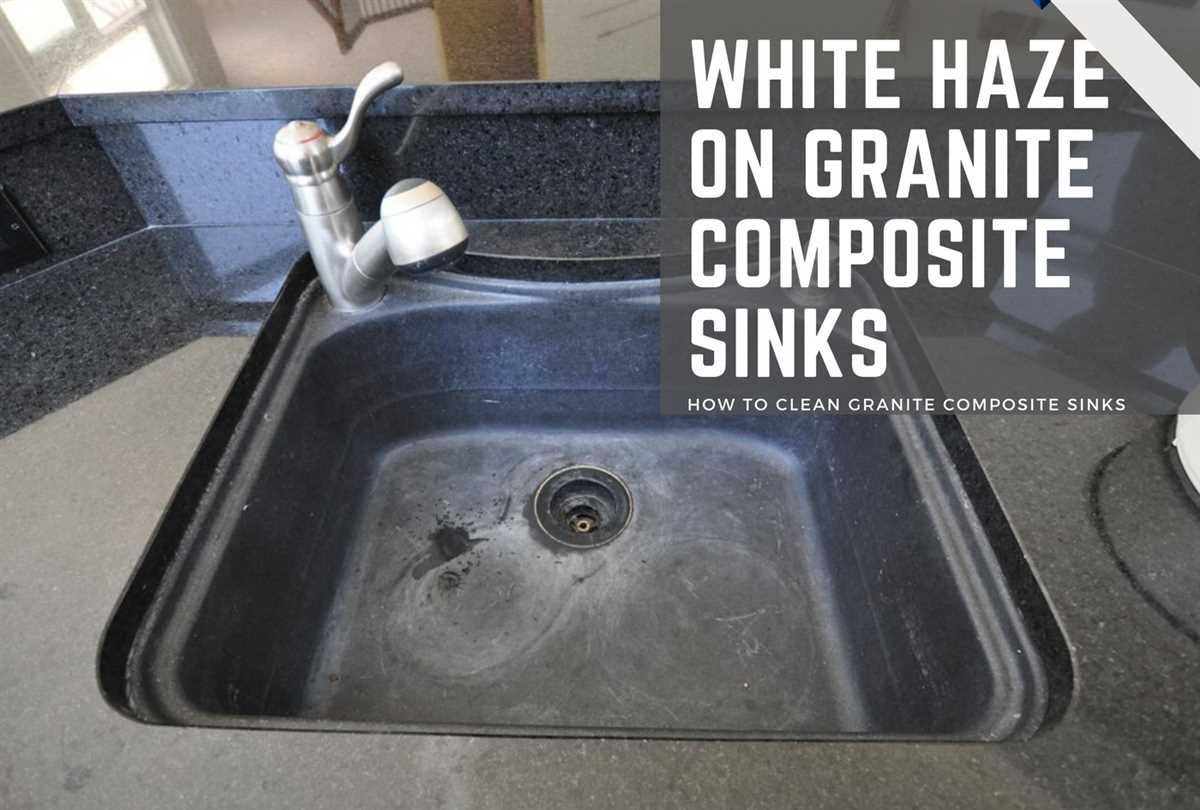
Using a soft sponge or cloth, scrub the sink with the cleaning solution. Pay attention to any areas with stains or buildup. Use gentle, circular motions to avoid scratching the surface.
4. Rinse thoroughly
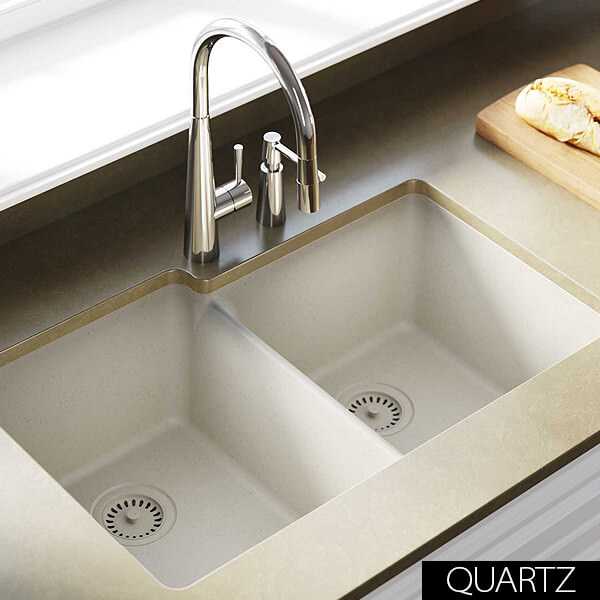
After scrubbing, rinse the sink thoroughly with warm water. Make sure all traces of the cleaning solution are removed.
5. Disinfect the sink
To disinfect the sink and kill bacteria, mix equal parts water and white vinegar. Pour the solution into a spray bottle and spray it all over the sink. Let it sit for 5-10 minutes to allow the vinegar to work its magic.
6. Scrub again
After the disinfectant has done its job, scrub the sink again with the dish soap solution. This will remove any lingering bacteria and odors.
7. Rinse and dry
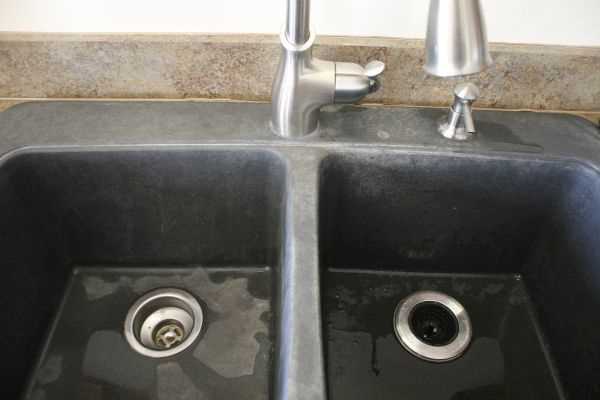
Rinse the sink with warm water once more to remove any residue. Use a clean, dry cloth to wipe the sink dry.
8. Apply a granite sealer (optional)
If your granite sink has not been sealed recently, you may consider applying a granite sealer according to the manufacturer’s instructions. This will protect the surface from stains and help it maintain its shine.
Following these steps will help you deep clean and disinfect your granite sink, leaving it clean, fresh, and germ-free.
Maintaining and Preventing Stains

To keep your granite sink looking its best, it’s important to maintain a regular cleaning routine and take steps to prevent stains. Here are some expert tips to help you keep your granite sink in top shape:
1. Clean it regularly
Regular cleaning is essential to prevent stains from building up on your granite sink. Use a mild dish soap or a pH-neutral stone cleaner and a soft cloth or sponge to wipe down the sink after each use. Avoid using abrasive cleaners or scrubbing pads, as they can scratch the surface of the granite.
2. Dry it after each use
To prevent water spots and mineral deposits from forming on your granite sink, make sure to dry it thoroughly after each use. Use a soft, dry cloth or towel to wipe away any moisture. This will help maintain the natural shine of the granite and prevent any buildup.
3. Avoid leaving acidic or staining substances on the surface
Acidic substances like vinegar, lemon juice, or certain cleaning products can etch the surface of the granite and cause stains. Similarly, substances like coffee, red wine, or tomato sauce can also leave behind hard-to-remove stains if not cleaned up promptly. Be mindful of what you place on your granite sink and clean up any spills or stains immediately.
4. Use a cutting board for food preparation
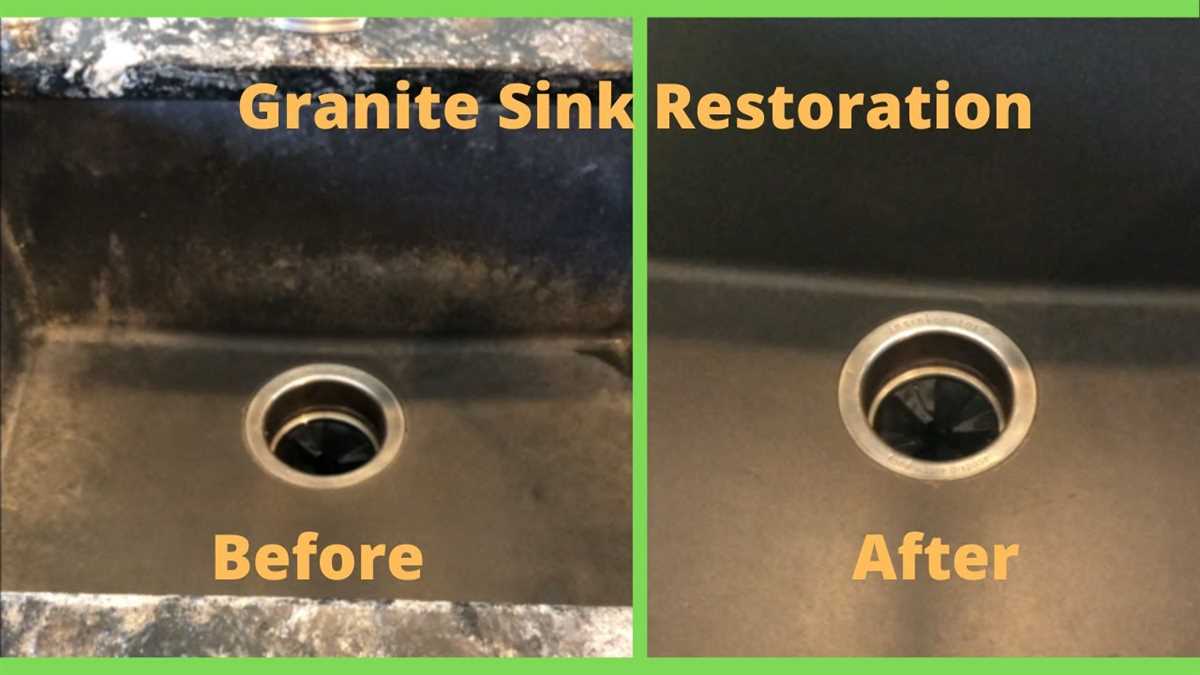
To avoid scratching the surface of your granite sink, always use a cutting board when chopping or preparing food. Avoid placing sharp objects directly on the sink as they can leave scratches and damage the granite. Using a cutting board will help preserve the beauty and integrity of your sink.
5. Consider sealing the granite
Applying a granite sealer can help protect your sink from stains and make it easier to clean. Follow the manufacturer’s instructions for application and reapplication to ensure maximum effectiveness. Regularly sealing your granite sink can help prolong its lifespan and maintain its appearance.
6. Avoid extreme temperatures
Granite is a durable material, but it can be susceptible to thermal shock. Avoid placing hot pans or pots directly on the surface of your granite sink, as sudden temperature changes can cause cracks or damage. Use trivets or heat-resistant pads to protect the sink from extreme heat.
By following these tips, you can maintain the beauty and functionality of your granite sink for years to come. Remember to clean it regularly, dry it after each use, avoid leaving acidic or staining substances on the surface, use a cutting board for food preparation, consider sealing the granite, and avoid extreme temperatures. With proper care, your granite sink will continue to be a stunning focal point in your kitchen.
Expert Tips for Long-Lasting Cleanliness
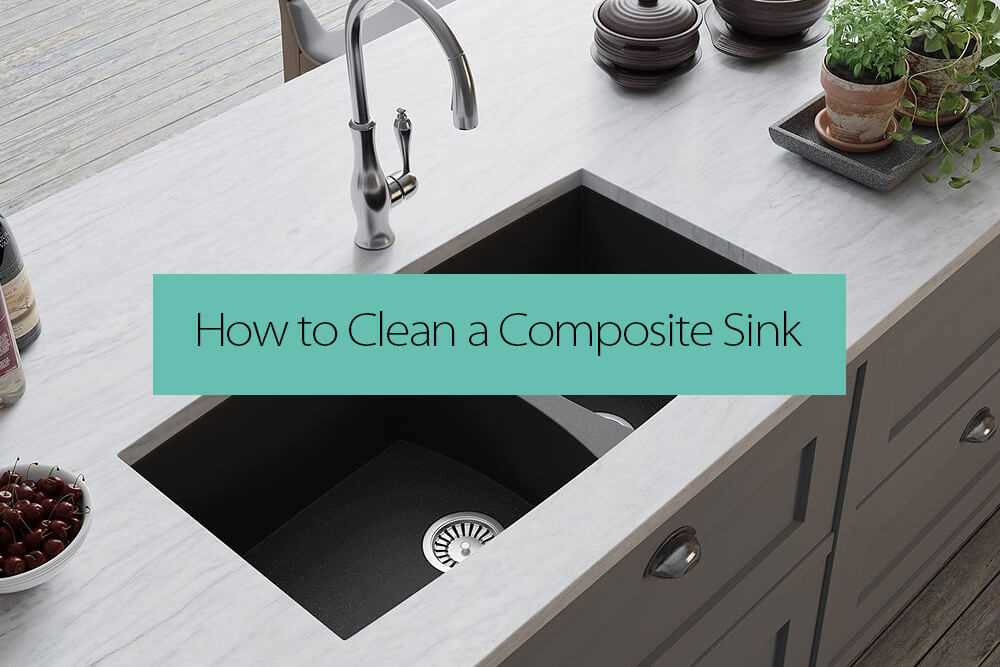
1. Clean up spills immediately
Granite sinks are resistant to stains, but it’s important to clean up spills as soon as they happen. Use a mild dish soap and warm water to gently clean the surface. Avoid using harsh chemicals or abrasive scrubbers, as they can damage the sink’s finish.
2. Use a soft cloth or sponge
When cleaning your granite sink, always use a soft cloth or sponge. Avoid using steel wool or other abrasive materials, as they can scratch the surface. Gently wipe the sink in circular motions to remove any dirt or grime.
3. Avoid acidic or abrasive cleaners
Acidic cleaners, such as vinegar or lemon juice, can damage the sealant on your granite sink. Similarly, abrasive cleaners can scratch the surface. Stick to mild dish soap and warm water for regular cleaning.
4. Dry the sink after each use
After using your granite sink, be sure to dry it thoroughly with a soft cloth or towel. This will help prevent water spots and mineral deposits from forming on the surface.
5. Use a granite sealer
Applying a granite sealer can help protect your sink from stains and make it easier to clean. Be sure to follow the manufacturer’s instructions for application and reapplication.
6. Avoid heavy impact
While granite sinks are durable, they can chip or crack if subjected to heavy impact. Avoid dropping heavy objects into the sink or using it as a cutting board.
7. Regularly clean the drain
To prevent clogs and maintain optimal drainage, regularly clean the drain of your granite sink. Use a drain cleaner specifically designed for granite sinks, or a mixture of baking soda and vinegar, to keep it clean and free of buildup.
8. Consider a protective sink grid
A protective sink grid can help prevent scratches and damage to your granite sink. These grids are placed at the bottom of the sink and provide a cushioned surface for dishes and utensils.
9. Regularly check and reapply sealant
Over time, the sealant on your granite sink may wear off. Regularly check the condition of the sealant and reapply as necessary to ensure long-lasting cleanliness and protection.
10. Follow the manufacturer’s care instructions
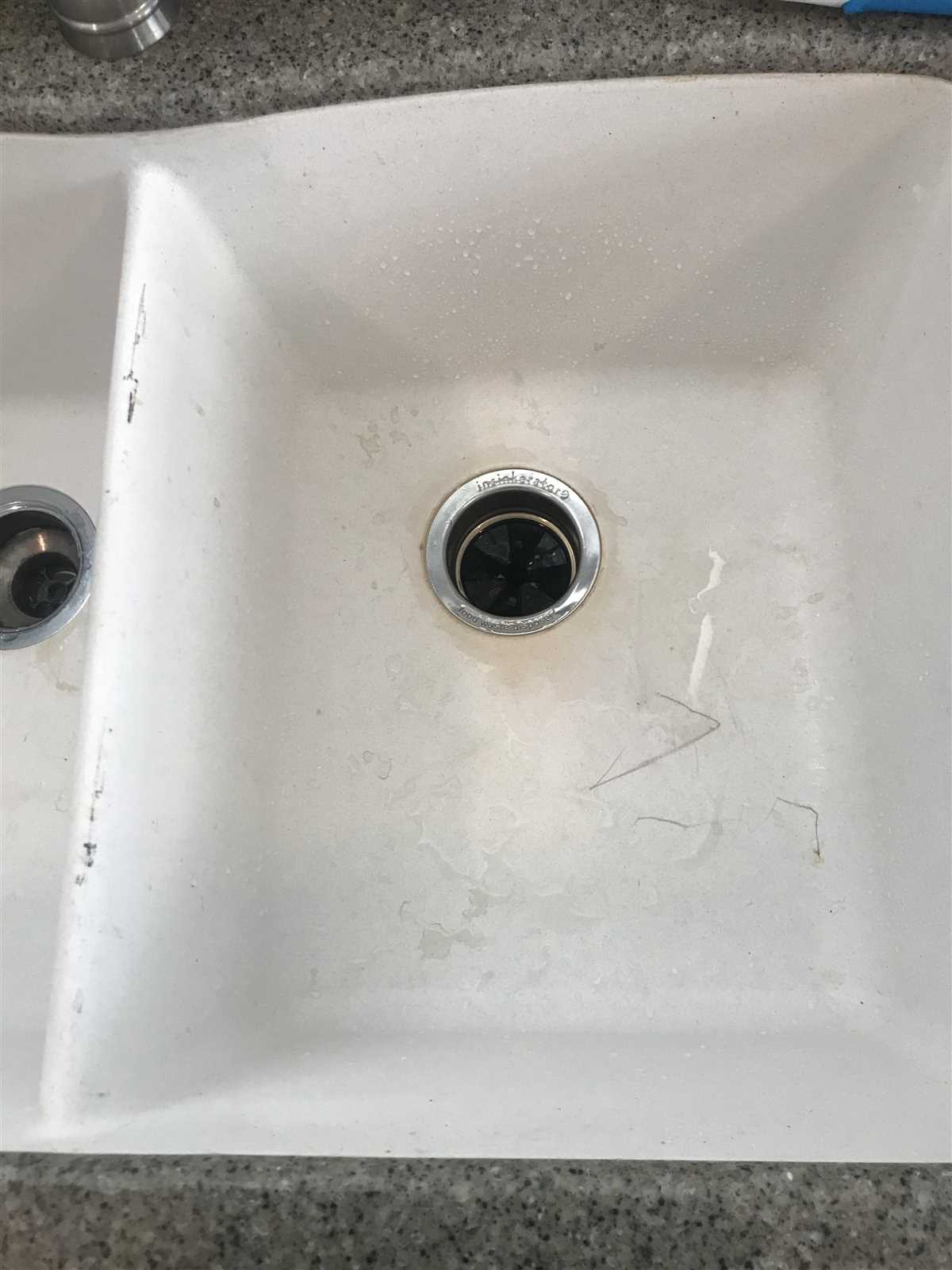
Every granite sink is different, so it’s important to follow the manufacturer’s care instructions for your specific sink. These instructions will provide specific guidelines on cleaning and maintenance to ensure the longevity of your granite sink.
FAQ
What is the best way to clean a granite sink?
The best way to clean a granite sink is to mix warm water with a mild dish soap and gently scrub the surface with a soft sponge or cloth. Rinse the sink thoroughly with clean water and dry it with a soft towel to prevent water spots.
Can I use bleach to clean a granite sink?
No, it is not recommended to use bleach to clean a granite sink. Bleach is too harsh and can damage the surface of the granite. Stick to mild dish soap and warm water for regular cleaning.
My granite sink has stubborn stains, what should I do?
If your granite sink has stubborn stains, you can try making a paste with baking soda and water. Apply the paste to the stained area and let it sit for a few minutes before scrubbing gently with a soft brush or sponge. Rinse thoroughly and dry.
Is it necessary to seal a granite sink?
No, granite sinks do not need to be sealed. Unlike granite countertops, sinks are not exposed to as much daily wear and tear, so sealing is not necessary.
Can I use abrasive cleaners on my granite sink?
No, abrasive cleaners should not be used on a granite sink. They can scratch the surface and cause damage. Stick to mild dish soap and warm water for regular cleaning.
How often should I clean my granite sink?
It is recommended to clean your granite sink at least once a week to prevent build-up and keep it looking its best. However, if you use the sink frequently or notice any stains or residue, it is best to clean it more often.












